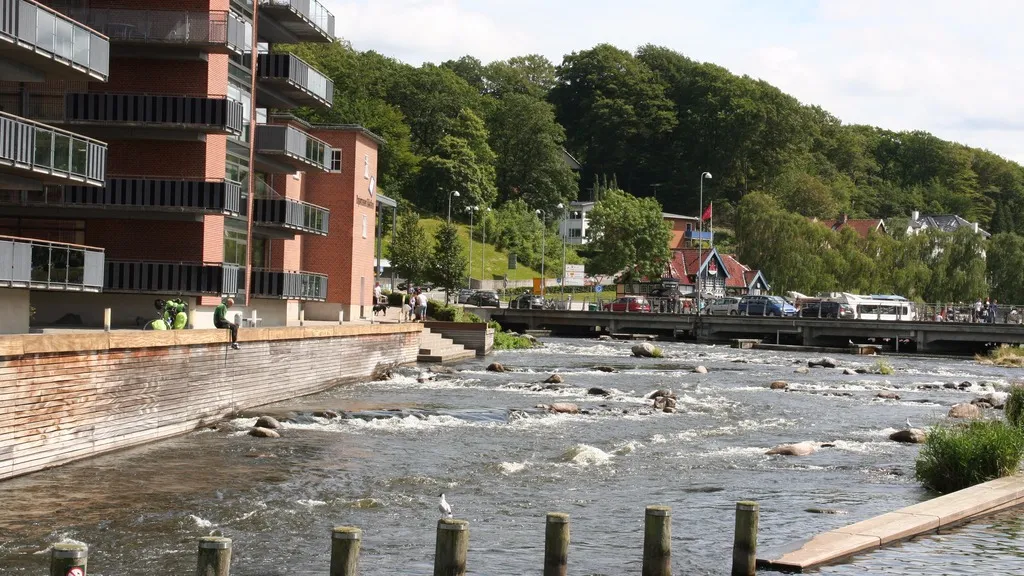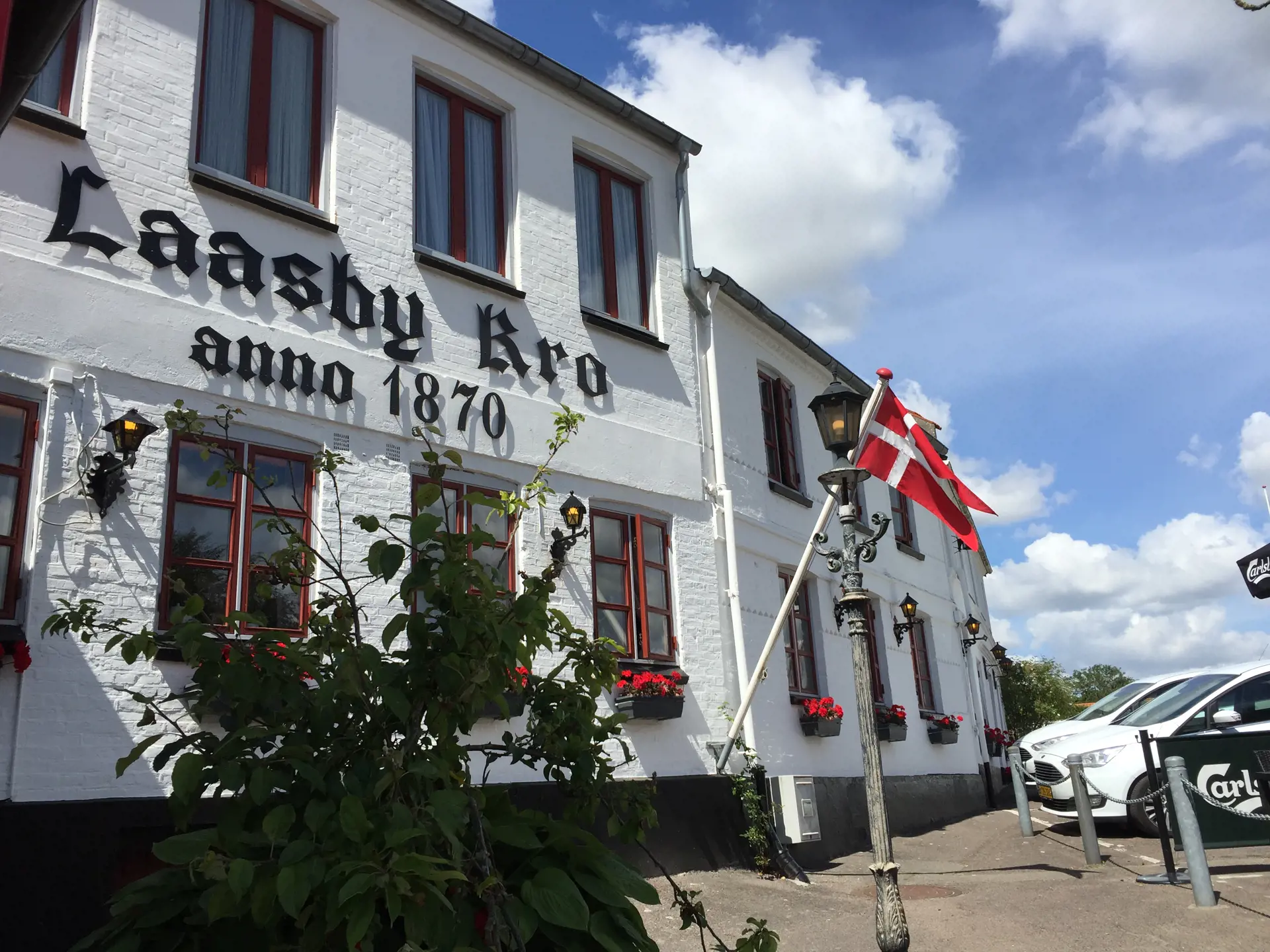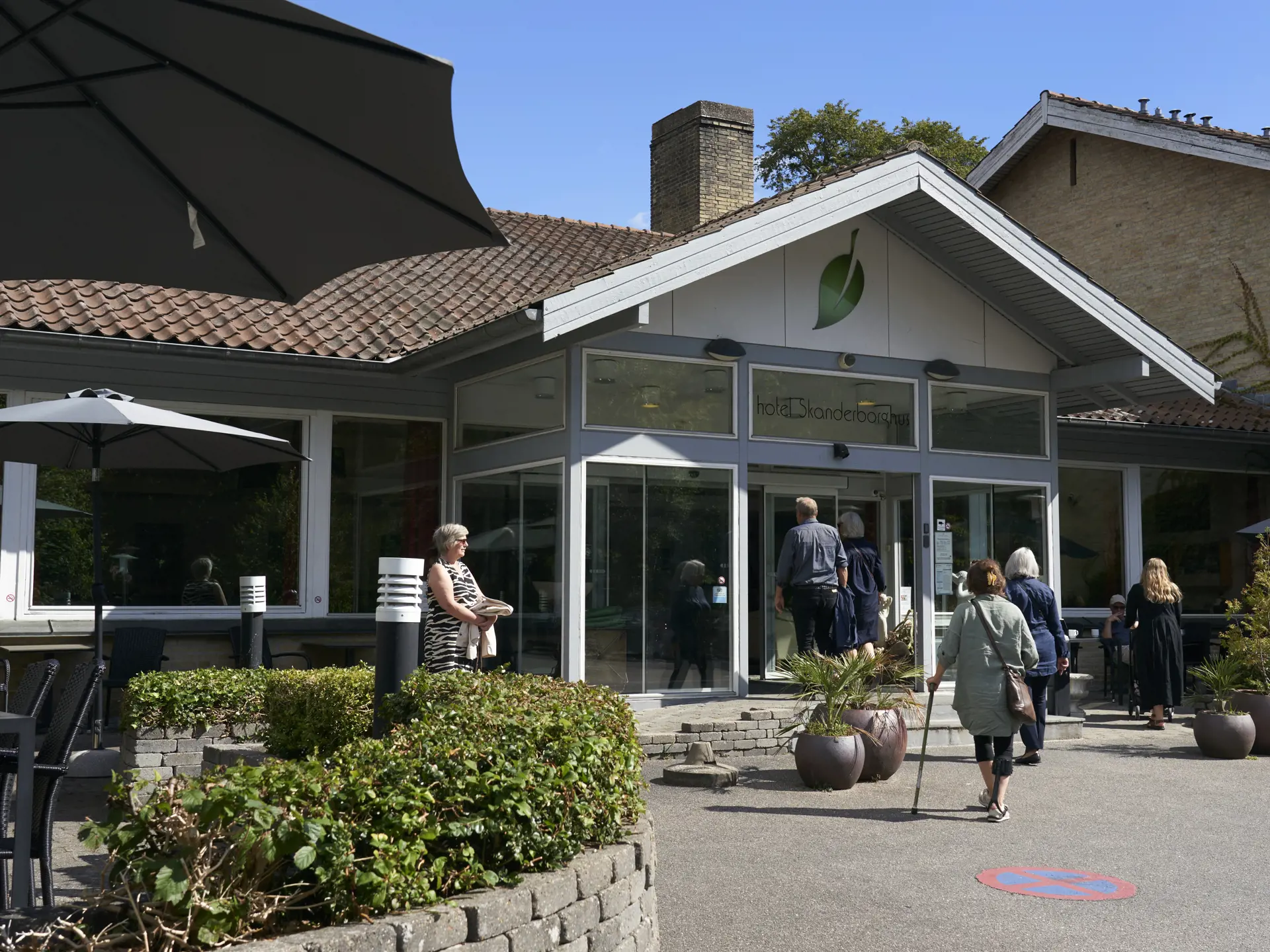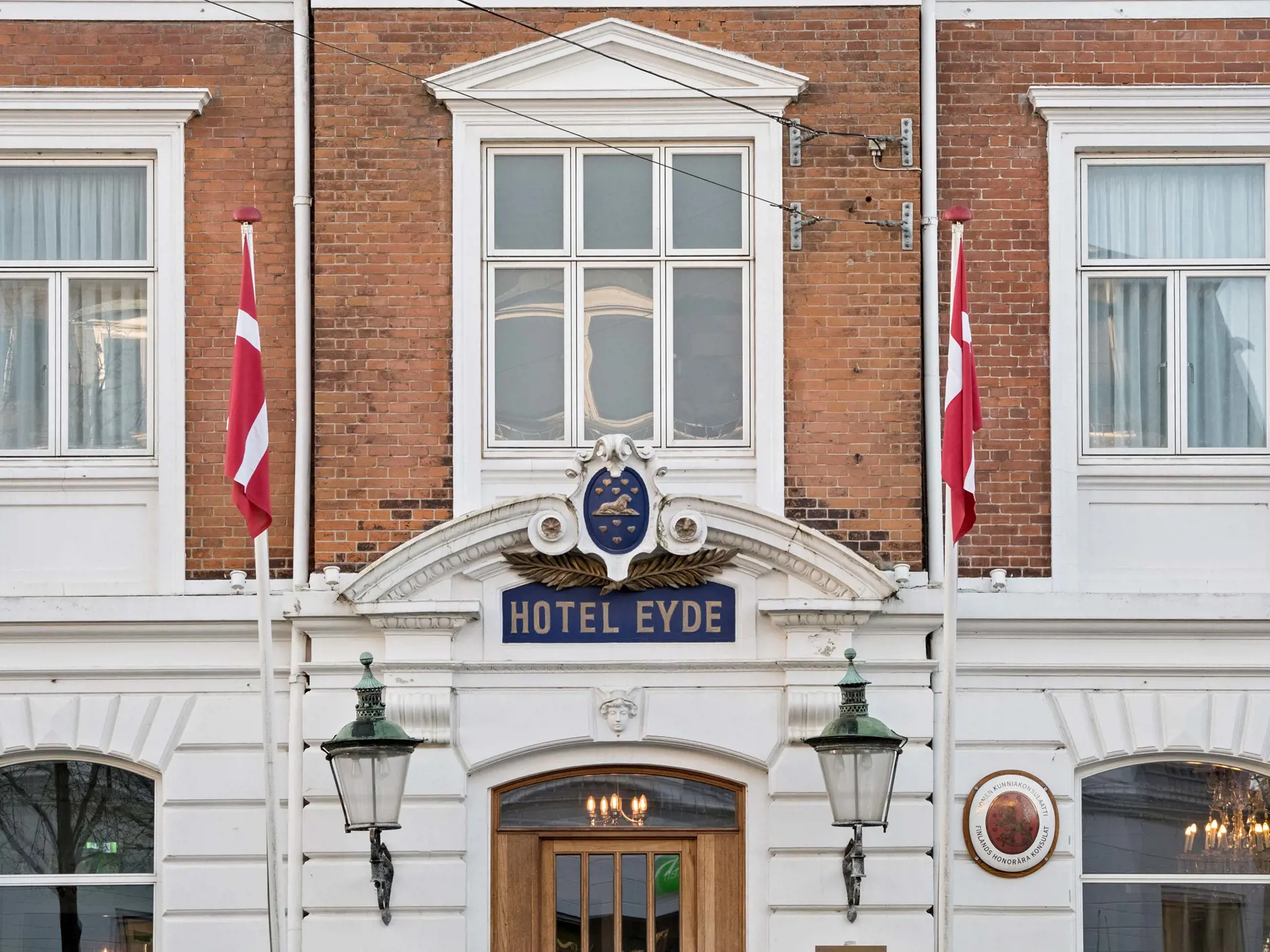The River Gudenå has been dammed up by the current Langebro bridge in Silkeborg since some time in the Middle Ages. A water mill was established at the spot, where the water power was used for grinding corn. When Silkeborg Papirfabrik opened in 1844, the mill was shut down and water power was instead used to operate the machines in the factory.
When the paper mill closed in 2000, the new owners of the factory area voluntarily relinquished the right to exploit the water power. The dam was removed, as was a turbine house that stood there. This opened up the opportunity to establish the long-awaited passage for fish and other small animals, known as a fauna passage. The passage – the longest of its kind in Denmark at 90 metres – was opened in June 2004.
10,000 tonnes of boulders, 200 tonnes of iron, 300 tonnes of concrete and 20 tonnes of wood were used for the ladder which leads the water flow in a zigzag through a drop of approximately two metres from the harbour and down to the end of the ladder. The water flow is automatically controlled by three large dam gates, which ensure that the water level only fluctuates within a pre-defined limit. Next to the passage is a canal that leads canoes and boats from the lock at the harbour out into the river course.












